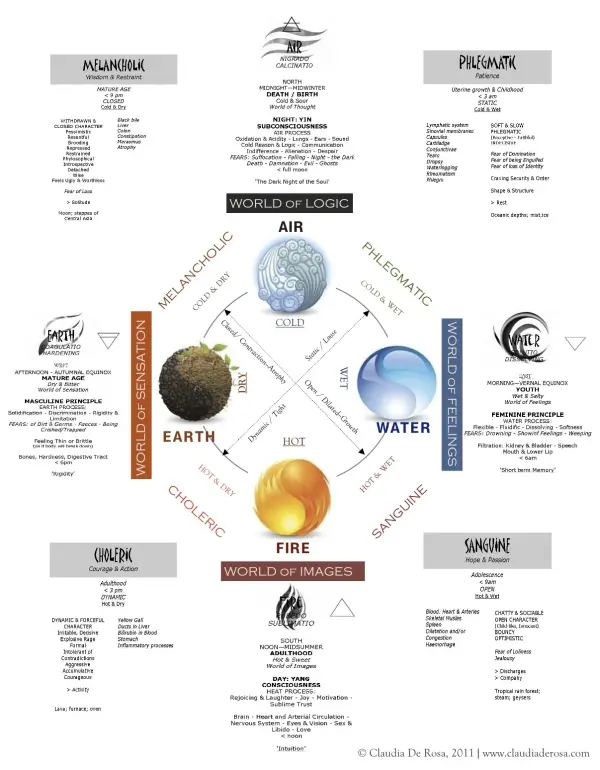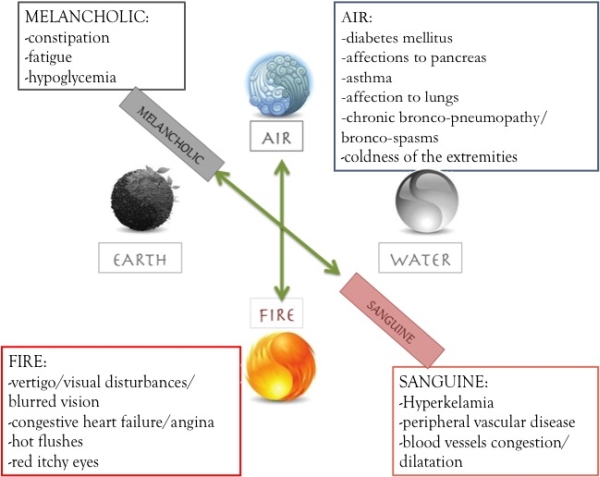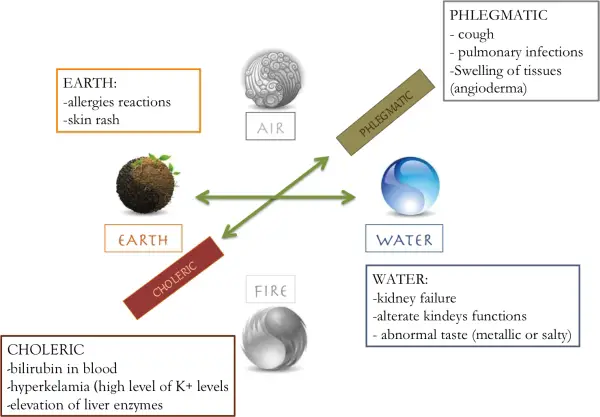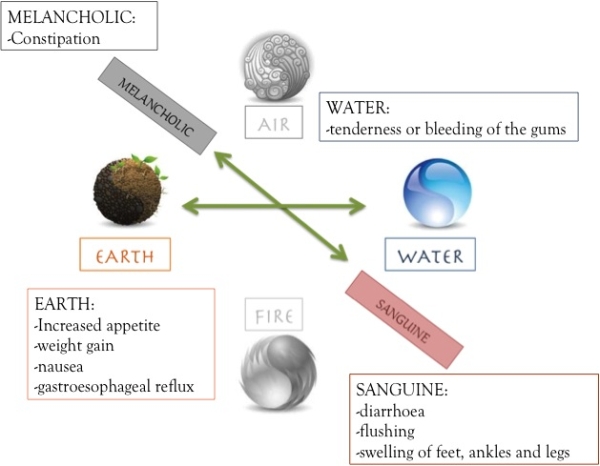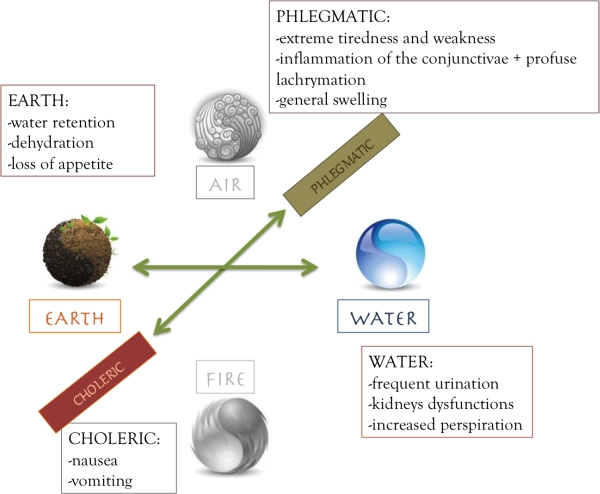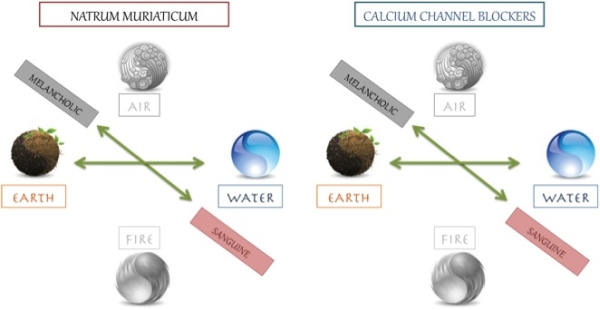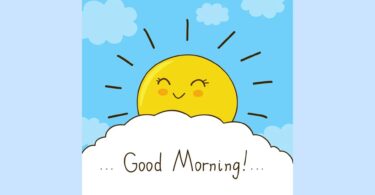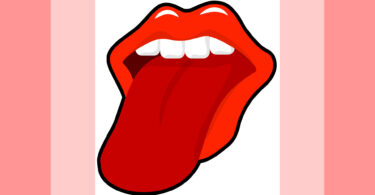Too often it is stated in a simplistic way that homeopathic treatment can assist and complement conventional treatment. This is partly true, but it is important to take good consideration of any possible actions and interactions between the “energetic” treatment and “physiological” triggers caused by the conventional drugs treatment.
By taking into consideration the energetic qualities of conventional drugs, the homeopath will be able to understand and decide how a particular medication may affect the case.
Homoeopathy is a system of therapeutics and operates on nature’s Law of Similars.
The remedy is selected on the basis of its capacity or power to produce in the healthy, a disease state.The selection of a remedy for a disease condition, therefore, depends upon the symptoms it can produce in a healthy state.
We understand the ability of the drug to produce a disease-like condition in a healthy state in three ways:
1. Provings: (Human pharmacology): Provings are the positive effect of the drug on the healthy human, which constitutes the actual drug action or “pathogenesis” in homoeopathy.
2. Toxicological study (poisoning): Toxicological effects are the gross effects of drugs showing changes in an anatomical or structural tissue, which are comparable with the pathological morbific changes seen in diseases
3. Clinical experience.
The drug has a three-fold action on the human organism:
1. Chemical action: It exhibits the affinity of the drug to the body tissue; it represents the chemical affinity which exists between the drug and the body tissue and it is independent of the body vitality. Strong nitric acid for example, will produce a considerable burning and sloughing of the skin.
2. Mechanical action is exhibited by the effort of the body to throw away the offending substance. For any foreign body entering the organism there is a tendency to throw it away through the mechanical action.
Chemical and Mechanical actions represent Primary Actions of the drugs.
3. Dynamic action: The dynamic action embraces all effects of drugs that cannot be accounted for by physical and chemical laws and are produced in the living body. It is the response to any external stimuli and depends upon the relation of the property of the drug to the susceptibility of the healthy living organism. They are known as non-pathognomic symptoms. The dynamic effects of a drug depend upon the vitality of the organism and the therapeutic property of the drug. These may be:
- Generic: common to all the members of a certain class of drugs (i.e: Dynamic effects of Arsenicum album in certain doses are vomiting, diarrhoea, cold sweat and cramps of the extremities. Cuprum, Veratrum and Antimonium produce the same “general” symptoms)
- Specific: related to peculiarities. It is related to susceptibility of the patient and the dosage. Hahnemann describes the two types of actions of drugs as the “Primary Action” and the “Secondary Action”:
- Primary Action: in §63 of the Organon Hahnemann states: “Every agent that acts upon the vitality, every medicine, deranges more or less the Vital Force and causes a certain alternation in the health of the individual for a longer or shorter period”
- Secondary Action (§ 64) is also known as “Dynamic Action of the Drugs” and it originates from the reaction of the Vital Force to the Primary Action. The Secondary or Dynamic Action produces certain physical and mental symptoms which depend upon the mutual reactions between the specific properties of drugs and the “Individual Susceptibility”.
The Drug Action is the sum total of the action induced in an individual living human being and the sum total of the reaction that it can induce in the Vital Force of the same.
Secondary or Dynamic Action may be of two types:
- Curative which depends on the principle “Similia Similibus Curentur”
- Counter which relies on the “Principle of Contraria”
If we consider the action of drugs in relation to their specificity and the potency and dosage in which they are administered to healthy human beings, we will observe that drugs administered in “large doses” produce certain symptoms during the initial state of their actions, which are then followed by symptoms exactly opposite in nature to those which were produced in the initial state (the first series of symptoms are due to Primary Action of the drug on the organism and the later series of symptoms exhibit the Secondary Action of drug, a reaction of the Vital Force).
To summarize, Hahnemann recognizes these expressions by primary and secondary action. While the chemical and mechanical actions belong to the category of primary action, the dynamic action corresponds to the secondary action. This is the action or response of the body to the Primary Action. It is the Secondary Action which is Curative in nature. In spite of phenomenal progress made by science in general, it is still very difficult to demonstrate the actual mode of action of homoeopathic remedies. We can demonstrate the efficacy of the homoeopathic remedy only clinically.
Our body has its own defence mechanism, the reticulo-endothelial system and psychoneuro-endocrinal system. Susceptibility is a fundamental attribute of life, upon which depends all the functions, all vital processes, physiological and pathological. We understand susceptibility as a general quality or capability of the living organism to receiving impressions- the power to react to stimuli.
Immunity is an antidotal substance or an antibody present in the living organism, which resists the stimuli of advance nature. There is a specific antibody reaction to specific stimuli generated by the defence mechanism of the body.
When an advance stimulus of disease is encountered, the body defence mechanism swings into action, and on recognizing this stimulus produces the desired defence block- through antibodies. If the stimulus is of a minor nature- the effect of the stimulus through the defence block (antibodies) restores the system to its normalcy, but if this stimulus is far greater than its capability, it gives way to the intruding stimulus and produces its impact on the living organism, which is experienced through signs and symptoms. However, the susceptibility or the fight-back power is not quick, but gradually musters strength to overcome the effects of adverse stimuli and restores the organism to near or total normalcy. This is what we see in indisposition functional disorders, where the stimulus has not created any structural damage to the system. But if this fails, the defence mechanism needs external assistance through remedies. Like a bacteriologist who selects a substance closely allied to the original poison or poison-producing agent, the homoeopath selects a substance closely allied to the original poison, a drug, the close alliance of which is shown by the extreme similarity of its effects to the original (disease) poison, the selection being on the basis of the law of similars. Drugs similarly selected act most favourably- certainly and effectively. They seem to act by stimulating the antidotal powers (susceptibility) of the body.
But how does a drug act?
Upon administration, a drug undergoes absorption from the administration site into the blood, distribution to target cells or organs, metabolism and excretion from the body. These four processes determine the intensity and duration of the drug’s actions. When given for a systemic effect, a drug must be absorbed into the bloodstream before it can be distributed to a distant target) location. This is true regardless of the route of administration (e.g. intramuscular or intravenous).
Oral and enteral medications travel through the stomach and the intestine where they are absorbed into the bloodstream. Intramuscular medications are absorbed from the muscle into surrounding blood vessels.
Once a drug enters the bloodstream, it is distributed throughout the body. It then reaches target cells, tissues and organs. When a drug reaches its site of action, it is changed into inactive form in preparation for excretion. Most metabolism occurs in the liver, however some detoxification can also occur in the kidneys, blood plasma, intestinal mucosa and lungs.
After being metabolized completely, partially or sometimes not at all, the drug is excreted from the body: the kidneys are the primary route of excretion as drug metabolities are eliminated in the urine. Some drugs are broken down by the liver and excreted into the gastrointestinal tract and eliminated in feces; some drugs instead are excreted by the lungs (e.g general anesthetics and ethyl alcohol). Most drugs excreted by the lungs are not metabolized first. Only a few drugs are excreted through the endocrine glands (e.g sweat and saliva).
In every day clinical practice over 90% of our patients take allopathic drugs along with the homeopathic treatment. How is it possible to gain information about conventional medicines and explain them in terms of homeopathic therapeutics? How do we assess and understand how an allopathic medication is energetically acting upon that particular organism?
It is believed that Hippocrates was the one who applied this idea to medicine. “Humoralism” or the doctrine of the Four Temperaments as a medical theory, retained its popularity for centuries largely through the influence of the writings of Galen (131-201 AD), and was decisively displaced only in 1858 by Rudolf Virchow’s newly-published theories of cellular pathology. While Galen thought that humours were formed in the body, rather than ingested, he believed that different foods had varying potential to be acted upon by the body to produce different humours. Seasons of the year, periods of life, geographic regions and occupations also influenced the nature of the humours formed.
The imbalance of humours, or “dyscrasia“, was thought to be the direct cause of all diseases. Health was associated with a balance of humours, or eucrasia. The qualities of the humours, in turn, influenced the nature of the diseases they caused.
Hahnemann was the first to fully integrate into medicine the innate constitution, the spiritual, mental and emotional temperament, the instinctive vital force, inheritance, predispositions, single and multiple causations, susceptibility, infection, acute and chronic miasms as well as the complete objective signs, coincidental befallments and subjective symptoms. Hippocrates is normally thought of as the father of constitutional medicine, but Hahnemann brought this study to its perfection in homoeopathy.
Aristotle identified 4 Elements (Fire, hot; Air, cold; Water, damp; Earth, dry) each one associated with 4 Humours and 4 Temperaments. Each conventional drug has its own “energetic” qualities in terms of action and affected organs (ie: Antidepressants tend to have a hot energetic action affecting mostly the heart and the liver, whilst diuretics tend to have a cold energetic action affecting especially the kidney).
Each element or substance has its own peculiarities: Fire/Heat/Choleric; Water/ Wetness/ Phlegmatic; Earth/Dryness/Melancholic; Air/Coldness/Sanguine.
The animating properties of living beings are made of a combination of elemental features and each element reveals its essence throughout humours and temperaments and together they flow dynamically within the body making that living being alive and unique. When one of the elements, humours and/or temperaments are in excess or deficiency within the system, the body will manifest an imbalance or dis-ease.
Elemental Cycle Model:
How do we apply the Elemental Cycle model to drug actions?
Let’s consider for instance anti-hypertension drugs.
The most common prescribed drugs for hypertension are:
– ß-blockers
– ACE inhibitors (= angiotensin-converting enzyme)
– Calcium channel blockers
– Diuretics
Anti-hypertensive agents are used to lower the blood pressure to specific target levels. When treatment with relatively high doses of an antihypertensive medication fails to lower blood pressure to target levels, two options are possible: that particular medication may be discontinued and a different class of antihypertensive medication begun, or a second class of medication may be added to the first agent. The second approach is often used because different classes of antihypertensive agents work in different ways to lower blood pressure, and the actions of one agent may complement the actions of the second agent. In some patients, it may be necessary to add a third agent.
Beta blockers, also known as beta-adrenergic blocking agents, are drugs that block norepinephrine and epinephrine (adrenaline) from binding to beta receptors on nerves. There are three types of beta receptors and they control several functions based on their location in the body:
- Beta-1 (ß1) receptors are located in the heart, eyes and kidneys;
- Beta-2 (ß2) receptors are found in the lungs, gastrointestinal tract, liver, uterus, blood vessels and skeletal muscle;
- Beta-3 (ß3) receptors are located in fat cells.
Beta blockers primarily block ß1 and ß2 receptors. By blocking the effect of norepinephrine and epinephrine, beta blockers reduce heart rate, reduce blood pressure by dilating blood vessels, and may constrict air passages by stimulating the muscles that surround the air passages to contract.
Beta blockers are used for treating:
- hypoglycemia
- abnormal heart rhythm
- high blood pressure
- heart failure
- angina
- tremor
- prevention of migraines
Major contraindications are:
- peripheral vascular disease
- chronic bronchopneumopathy
- asthma
- hypoglycemia
- ailments of the pancreas
- diabetes mellitus
- hyperkalemia ( high concentration of K+ in the blood)
- constipation
- fatigue
- vertigo
If we place those characteristics on the Elemental Cycle Model, we will observe that Beta-blocker drugs act energetically along the Air-Fire and Melancholic and Sanguine axis:
ACE inhibitors are medications that slow (inhibit) the activity of the enzyme ACE, which decreases the production of angiotensin II. As a result, the blood vessels enlarge or dilate, and blood pressure is reduced. This lower blood pressure makes it easier for the heart to pump blood and can improve the function of a failing heart. In addition, the progression of kidney disease due to high blood pressure or diabetes is slowed.
Major contraindications of Ace inihibitors are:
- kidney functions / kidney failure
- allergic reactions
- decrease of white blood cells
- bilirubin in blood
- swelling of tissues (= angioedema)
- cough
- elevated blood K+ levels
- elevated liver enzymes levels
- abnormal taste (metallic or salty taste)
- skin rash
If we place those on the Elemental Cycle Model we will see that Ace inhibitors act energetically along the Earth/Water and Choleric/Phlegmatic axis:
The general action of calcium channel blockers is very analogous to that of ?-blockers.
Calcium channel blockers prevent calcium from entering cells of the heart and blood vessel walls, resulting in lower blood pressure. Calcium channel blockers, also called calcium antagonists, relax and widen blood vessels by affecting the muscle cells in the arterial walls.
Common types are Diltiazem, Amodipine, Verapam.
Major contraindications of Calcium Channel Blockers are:
- Drowsiness
- Increased Appetite
- Weight Gain
- Diarrhoea
- Flushing
- Nausea
- Swelling of feet, ankles and legs
- Constipation
- Tenderness or bleeding of the gums
- Gastroesophageal reflux
In this case the drug will energetically act along the Earth/Water and Melancholic/Sanguine axis:
Commonly known as “water pills”, diuretics are prescribed to help the body get rid of ‘unneeded’ water and salt through the urine. They are often prescribed in conjunction with the other two types of diuretics, but also do not significantly lower blood pressure.
Major contraindications of Diuretics are:
- Frequent urination
- Kidneys dysfunctions
- Extreme tiredness and weakness
- Eyes sensitive with profuse lachrymation and inflammation of the conjunctivae
- General swelling
- Confusion
- Increased perspiration
- Dehydration
- Loss of appetite, nausea with vomiting
The Elemental Cycle Model of Diuretics will express along Earth/ Water and Choleric/Phlegmatic axis:
How do we apply the Elemental Cycle Model of drugs into practice?
Let’s consider the following case.
Ciran, 54 years old, constructor
Presenting Complaint:Acute pain in right knee joint and muscles cramps and numbness in both legs.
Past history:Known hypertensive since 4 years, he is on Dilzem 30mg (= Calcium Channel Blocker drug) . Whenever he stopped or missed a single dose of medicines his BP rose. His BP is now stable at 150/95. High blood pressure is accompanied by palpitation, dyspnoea and excessive sweating.
Physicals and Generals symptoms:
– Acute pain in r knee joint, < sunny weather and damp, icy cold feeling, < since HBP
– Cramping pain in muscles, stiffness and numbness < 9-11am, cold feeling
– Appetite ravenous since Dilzem- Strong desire for salt and salty food but no thirst – Perspiration has increased since HBP, < axillae
– Chilliness especially in the lower limbs, hands and feet < since HBP
– Sleep disturbed, awakes from dreams of daily work
– Urination frequent since Dilzem, sometimes involuntary.
Mental and Emotional symptoms:
Sad and depressed after getting separated from his wife: “I feel lonely, alone in this world. I feel I’m breaking, I’ve become fragile and I’ve lost my structure. I don’t show anyone how deep I suffer, nobody would understand, so I suppress deep inside the sadness and my emotions”
The case is quite straight forward and the remedy choice is quite obvious: Natrum muriaticum. The vision of Natrum muriaticum is “Retaining my structure to suppress emotional pain.” In its essence, Nat.mur feels let down, walled off and closed emotionally, dwelling and holding onto the past: Sodium chloride (Nat.mur) absorbs, retains and crystallizes to preserve. When it dissolves it loses boundaries, when it dries it has structure.
On the Elemental Cycle Model, Natrum mur. will appear as shown below:
If we compare the Elemental Cycle map of Nat Mur with the Elemental Cycle map of Calcium Channel Blockers (Ciaran’s medication) we will observe that energetically they have similar energetic actions:
When it comes to daily practice and to patient’s management, a variety of problems arise, but when it comes to treating patients who are taking allopathic medication along with the homeopathic treatment, four important issues should be considered and evaluated:
1. The actions of the remedy mimic the actions of the drug.
2. Drug’s side-effects interfere with the overall energetic state of the patient, altering the expression of the pathology itself.
3. Homeopathic remedies may “decrease” the effectiveness of the drugs : drugs are not meant to “cure” but to suppress/remove symptoms. Remedies are prescribed to restore the underlying imbalances that have led to the symptoms in the first place and these are quite different processes, with different outcomes (“antidoting action”)
4.Homeopathic remedies may “increase” the effectiveness of the drugs: there may be interactions between substances due to the changes in absorption, distribution, metabolism and elimination.
Therefore assessment of the energetic actions of drugs could be a useful tool in leading to more effective therapeutic responses.


